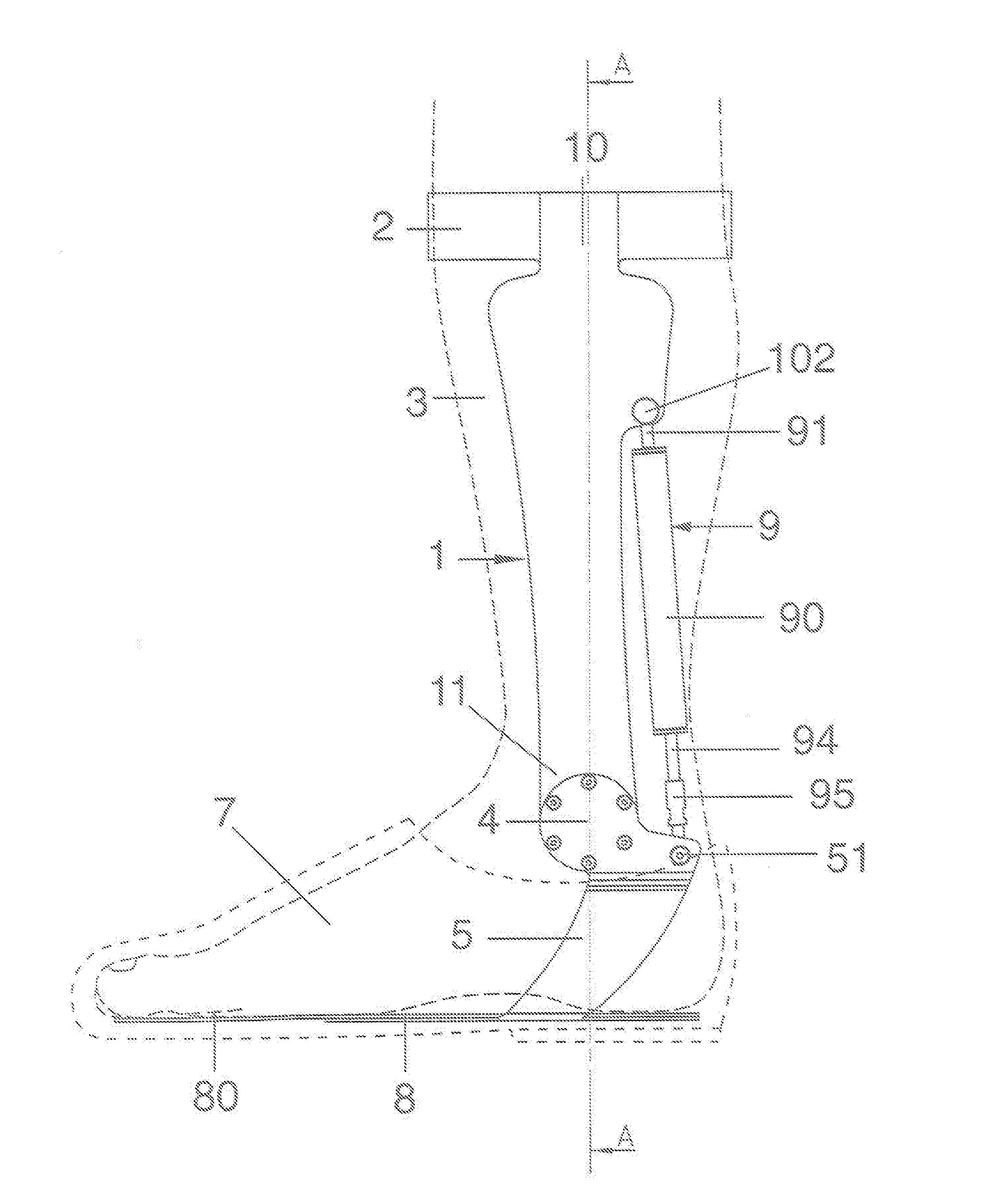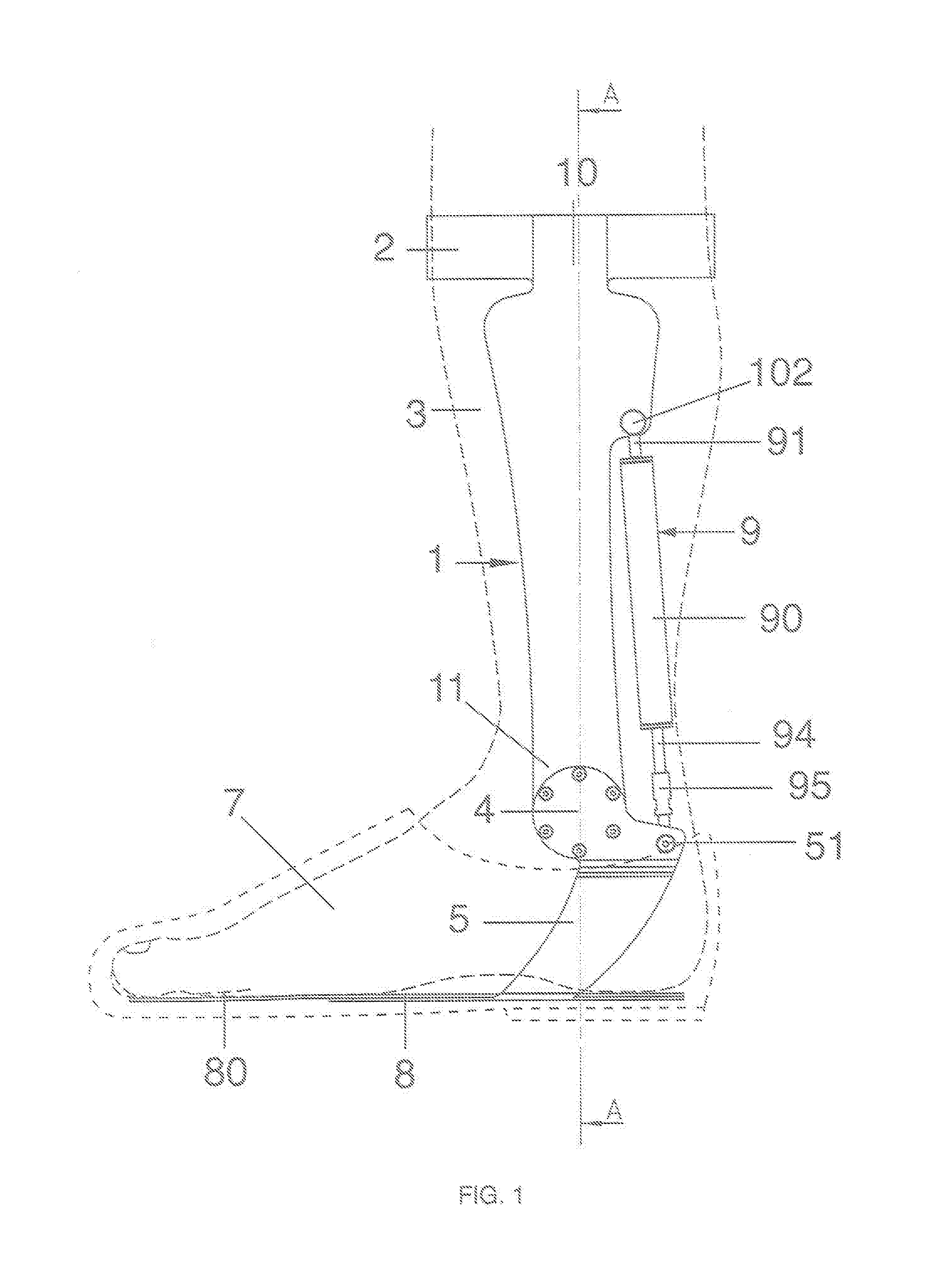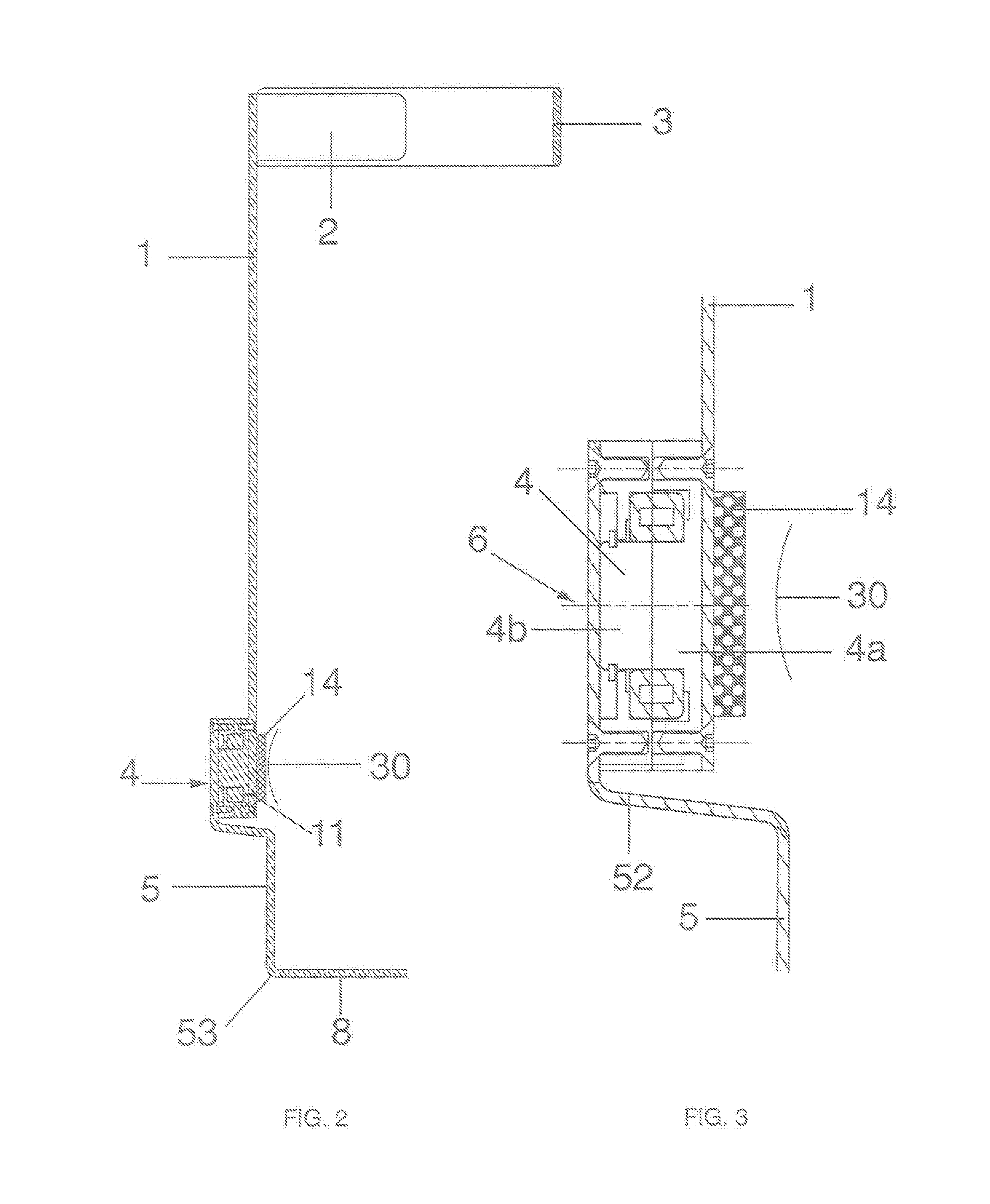Dynamic orthosis for foot drop
- Summary
- Abstract
- Description
- Claims
- Application Information
AI Technical Summary
Benefits of technology
Problems solved by technology
Method used
Image
Examples
Embodiment Construction
[0011]The orthosis of the present invention is shown for reference in the accompanying drawings, wherein:
[0012]FIG. 1 is an ensemble front view of the orthosis in the state of use;
[0013]FIG. 2 is a vertical section taken on line A-A of FIG. 1;
[0014]FIG. 3 shows the primary joint for moving the foot;
[0015]FIG. 4 shows the orthosis with the bracket in a state of maximum lifting;
[0016]FIG. 5 shows the elastic device;
[0017]FIG. 6 shows a diagram of the elongation curve of a magnetic spring comprised in the device of the invention;
[0018]FIG. 7 shows a diagram of a elongation curve of a standard steel spring.
[0019]Reduced to its essential construction, the orthosis comprises: a vertical, substantially flat bar (1), whose upper end (10) is anchored to a collar (2) to be fastened by common automatic means to the leg (3) above the user's calf, and fixed to the lower end of said bar is a rolling bearing (4) to which a flat cantilevered arm with curvilinear profiled arm (5) is hinged to be osc...
PUM
 Login to View More
Login to View More Abstract
Description
Claims
Application Information
 Login to View More
Login to View More - R&D
- Intellectual Property
- Life Sciences
- Materials
- Tech Scout
- Unparalleled Data Quality
- Higher Quality Content
- 60% Fewer Hallucinations
Browse by: Latest US Patents, China's latest patents, Technical Efficacy Thesaurus, Application Domain, Technology Topic, Popular Technical Reports.
© 2025 PatSnap. All rights reserved.Legal|Privacy policy|Modern Slavery Act Transparency Statement|Sitemap|About US| Contact US: help@patsnap.com



